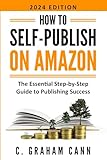Writing Poetry, Part 2
Rhythm in poetry. Examples of iambic, trochaic, dactylic and anapestic rhythms are given.

This order, or rhythm, is not always the same as in the lines we have examined. There are several other ways of arranging the weak and strong syllables, which we shall take up later. This one, however, is the most common. A remarkably large proportion of the poetry of our language is written in it. It is called the iambic rhythm, and each group or pair composed of a weak syllable followed by a strong one is called an iambic foot or an iambus.
The iambic rhythm is used for long and short lines alike. Count the number of strong syllables in each of the lines we are examining. You find five, do you not? Since each strong syllable with the weak preceding it, makes a foot, each of these is a line of five feet, called a pentameter line. You will observe that the swing of the line is rather slow because of its length. It is suited to serious poems particularly, though sometimes used for lighter ones. Shakespeare's plays, in the main, "Paradise Lost," "The Idylls of the King," most of the longer poems of Pope, Keats, Shelley, Wordsworth and Browning, and all sonnets are made up of iambic pentameter lines
.
While regularity is necessary to rhythm, absolute regularity grows monotonous, and certain variations are permissible. Notice this:
Mil'ton,
thou shouldst' be liv'-ing at' this hour'.
Note that the first foot is reversed, the accent coming on the first syllable, not the second; this not only gives variety, but emphasizes the first word, thus catching our attention at once. The same change may be made in any other foot in the line save the last.
An extra weak syllable may be introduced occasionally, giving a lighter, more tripping swing to the line, as is this: The ear'-li-est pipe' of half-a-wak'-en'-ed birds'.
A line is given strength by its words being strong in sound and meaning, and by the thoughts ending with the line; yet a succession of such lines is tiresome, and a change is effected by sometimes ending a line with a word which, though accented, is rather unimportant, and which carries the thought and sound smoothly into the next line, thus:
The
violet varies from the lily as far As oak from elm.
These are called "run-on lines," the others "end-stopped."
These are called "run-on lines," the others "end-stopped."
Now count the feet in the following lines, and watch the order of syllables:
The
stag' at eve' had drunk' his fill'.
The rain'-bow comes' and goes'.
But yet' I know'
Where'er' I go', That there' hath passed' a-way' a glo'ry from the earth'.
The rain'-bow comes' and goes'.
But yet' I know'
Where'er' I go', That there' hath passed' a-way' a glo'ry from the earth'.
The rhythm is still iambic, you will find. But the number of feet varies from two to six. The first, the four foot, or tetrameter, line, is much used in narrative poems, as its shorter swing lends itself to descriptions of action. The line of three feet, or trimeter, is used more for short, light verses, and frequently is combined with the four and five foot lines; a long poem in trimeter is too jerky to be pleasant, as a rule. The same things may be said of the two-foot, or dimeter line. These short lines are used effectively in humorous poems. The line of six iambic feet is seldom used, as its length makes it clumsy, Save in certain combinations with shorter lines.
All the variations noticed in five-foot lines are used in the shorter ones, and it is also common to drop the first syllable of a line entirely, with this effect:
On'
the road' to Man'-dalay'
Where' the fly'-ing flsh'es play'.
Will'-ows whit'-en, asp'-ens quiv'-er,
Lit'-tle breez'es dusk' and shiv'-er.
Where' the fly'-ing flsh'es play'.
Notice the order of strong and weak
syllables in these lines:
Will'-ows whit'-en, asp'-ens quiv'-er,
Lit'-tle breez'es dusk' and shiv'-er.
Do you not find that the strong precedes the weak in regular sequence, reversing the order in the iambic line? This is called the trochaic rhythm, each foot being a trochee or trochaic foot. Like the iambic it is used for long and short lines, although more frequently for short than long ones, as it is rather lighter in effect than the iambic, and so better suited for lyrics than Cor long and serious poems. This light effect is given chiefly by the weak syllable ending the line.
The trochaic rhythm is varied by the occasional use of an extra unaccented syllable within the line, and by combinations with the iambic rhythm.
A little study of Tennyson's "Lady of Shalott" shows one the exquisite effects to be gained by these combinations.
A third order of strong and weak syllables is found in the following:
Pray'
but one | prayer' for me | twixt' thy closed | lips'
Think' but one | thought' of me | up' in the | stars'.
Think' but one | thought' of me | up' in the | stars'.
In these lines it is clear that two weak syllables follow each strong one, save at the end of the line. These feet of three syllables instead of two give an entirely different swing to the line. This is the dactylic rhythm, and each foot is a dactyl. Two unaccented syllables at the end of the line, however, make a very weak ending; hence dactylic lines, especially when of more than two feet, usually end with a trochaic or iambic foot, or, as in the lines quoted, with one strong syllable. In the Greek and Latin, dactylic lines of six feet, called dactylic hexameters, were used for long poems, such as the "Iliad" and "Aeneid." In these hexameters the final foot of a line has two long syllables, and is called a spondee. The spondee is seldom found in English poetry because it is not natural in our language to give two succeeding syllables an equal stress
.
The dactylic hexameter, however, has been imitated in English, notably "Evangeline," though the spondees are usually replaced by strong trochaic feet, such as hem'-lock and star'-light.
These lines of Hood's are good examples of the use of dactylic rhythm in short lines:
Take'
her up | ten'-der-ly,
Touch' her with | care';
Fash'-ioned so | slen'-der-ly,
Young' and so | fair'.
When the hounds' | of the spring' | are on win' | ter's trai'-ls.
tide- | less, dol'- | orous mid' | land sea'.
And he had' | to wear light' | -ning rods ov'- | er his ears' | To
ev'- | en hear thun'- | der; sometimes' | even then' | He was
forced' | to request' | it to thun'- der again'. |
One thing to be noticed in all rhythms is that such words as "and," "now," "is," "it," etc., are sometimes used as strong syllables and sometimes as weak. That is because we sometimes naturally emphasize them and at other times do not, according bo the meaning and sound of the words used with them. The verse-writer should beware of forcing them into undue prominence; generally speaking, accented syllables should be words of significance both in sound and meaning.
Another thing for the worker in rhythms to beware of is the using of such words as "fire," "dire," "drawn," etc., as two syllables. It is a fault great poets have committed, but none the less a fault.
By noting the rhythm, or order of syllables, and the meter, or length, of the lines in reading poetry one easily becomes familiar with the different varieties and the variations used in each. Such knowledge is as useful to a poet or verse writer as is an understanding of color and perspective to a painter or of harmony to a composer of music.
Touch' her with | care';
Fash'-ioned so | slen'-der-ly,
Young' and so | fair'.
There is one more regular rhythm in
English poetry, of which this line, save the last foot, is an example:
When the hounds' | of the spring' | are on win' | ter's trai'-ls.
This is another rhythm in which three
syllables compose a foot, but the order of the dactylic is reversed:
the strong syllable follows the two weak ones. It is called the
anapestic, each foot being an anapest. Like the other three, it is used
for lines of varying length, although seldom for one of more than four
feet. Like the dactylic, it is seldom pure, especially in long lines.
Its beauty is enhanced by the proper use of variations, which are
generally made by dropping a weak syllable now and then, and by using
an iambic foot at the end of the line, or, as here, an iambic foot
followed by a single weak syllable. Many of Swinburne's most marvelous
rhythmic effects are obtained by the union of anapestic and iambic
feet, as in this:
A sing'- | er there was' | in France'
| of old' | By the tide- | less, dol'- | orous mid' | land sea'.
An example of anapestic lines used in
humorous poetry is found in Whitcomb Riley's "Grandfather Squeers":
And he had' | to wear light' | -ning rods ov'- | er his ears' | To
ev'- | en hear thun'- | der; sometimes' | even then' | He was
forced' | to request' | it to thun'- der again'. |
One thing to be noticed in all rhythms is that such words as "and," "now," "is," "it," etc., are sometimes used as strong syllables and sometimes as weak. That is because we sometimes naturally emphasize them and at other times do not, according bo the meaning and sound of the words used with them. The verse-writer should beware of forcing them into undue prominence; generally speaking, accented syllables should be words of significance both in sound and meaning.
Another thing for the worker in rhythms to beware of is the using of such words as "fire," "dire," "drawn," etc., as two syllables. It is a fault great poets have committed, but none the less a fault.
By noting the rhythm, or order of syllables, and the meter, or length, of the lines in reading poetry one easily becomes familiar with the different varieties and the variations used in each. Such knowledge is as useful to a poet or verse writer as is an understanding of color and perspective to a painter or of harmony to a composer of music.
Read These Next
ISBN Frequently Asked Questions
For many first-time publishers and self-published authors, getting an ISBN and barcode on their books seems like an unimportant formality. It is, however, a vitally important part of your book publishing strategy that shouldn't be neglected.
5 Ways Authors Can Find Out Who is Buying Their Books
Authors must find out who their readers are in order to build profitable lasting relationships with them. Identifying readers who buy books from bookstores and independent distributors is usually impossible. The solution? Bonus content online.
First Steps to the Finish Line
Judy Cullins offers advice to non-fiction writers who are hoping to write their first ebook quickly and effectively







 Self-Publishing For Dummies (For Dummies: Learning Made Easy)
Self-Publishing For Dummies (For Dummies: Learning Made Easy) Self Publishing To Amazon KDP In 2023 - A Beginners Guide To Selling E-books, Audiobooks & Paperbacks On Amazon, Audible & Beyond
Self Publishing To Amazon KDP In 2023 - A Beginners Guide To Selling E-books, Audiobooks & Paperbacks On Amazon, Audible & Beyond Self-Publishing: The Secret Guide To Becoming A Best Seller (Self Publishing Disruption Book 2)
Self-Publishing: The Secret Guide To Becoming A Best Seller (Self Publishing Disruption Book 2) How to Self-Publish Your Book: A Complete Guide to Writing, Editing, Marketing & Selling Your Own Book
How to Self-Publish Your Book: A Complete Guide to Writing, Editing, Marketing & Selling Your Own Book Self Publishing To Amazon KDP In 2024 - A Beginners Guide To Selling E-books, Audiobooks & Paperbacks On Amazon, Audible & Beyond
Self Publishing To Amazon KDP In 2024 - A Beginners Guide To Selling E-books, Audiobooks & Paperbacks On Amazon, Audible & Beyond Write. Publish. Repeat. (The No-Luck-Required Guide to Self-Publishing Success)
Write. Publish. Repeat. (The No-Luck-Required Guide to Self-Publishing Success) How to Self-Publish on Amazon: The Essential Step-by-Step Guide to Publishing Success
How to Self-Publish on Amazon: The Essential Step-by-Step Guide to Publishing Success 14 Steps to Self-Publishing a Book
14 Steps to Self-Publishing a Book How To Self-Publish A Children's Book: Everything You Need To Know To Write, Illustrate, Publish, And Market Your Paperback And Ebook
How To Self-Publish A Children's Book: Everything You Need To Know To Write, Illustrate, Publish, And Market Your Paperback And Ebook Self-Publisher's Legal Handbook: Updated Guide to Protecting Your Rights and Wallet
Self-Publisher's Legal Handbook: Updated Guide to Protecting Your Rights and Wallet